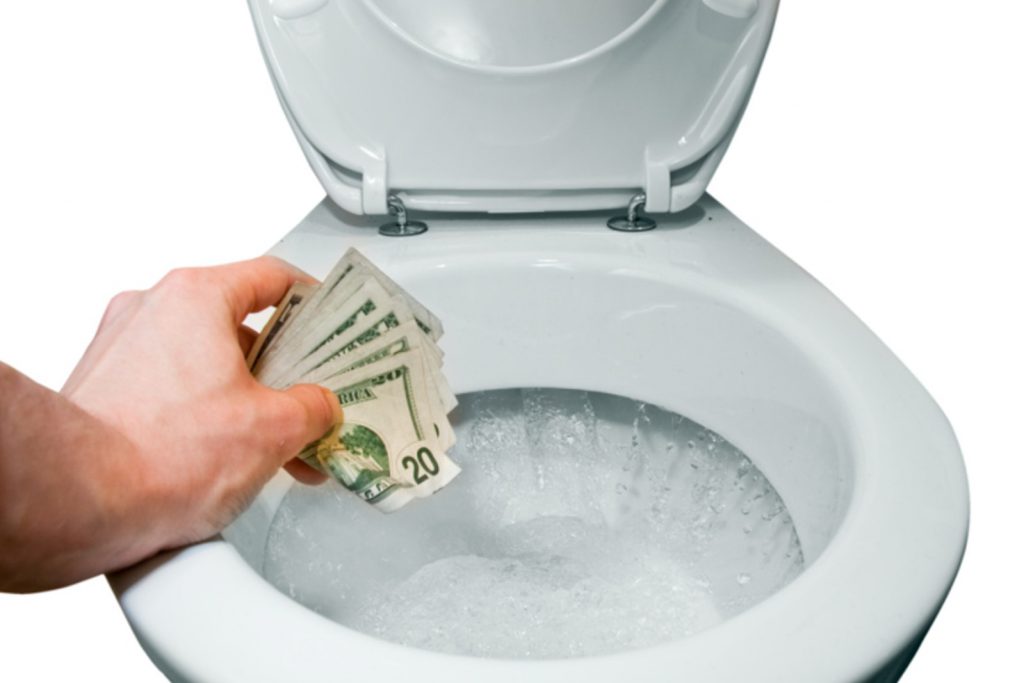In this edition of expert plumbing tips for homeowners, we will cover the all-too-common problem of the running toilet. In many cases, these plumbing problems can be fixed very easily – many times without you even having to leave your home!
Toilets run for one of two reasons: Either water is leaking from the tank into the bowl, or the fill tube is refilling too much water into the tank, activating its overflow tube. You should be able to stop either problem quickly by adjusting the flapper, float, or tubes.
Let’s see how:
Adjust the flapper
The plastic cup at the bottom of the tank is called the flapper. Flapper problems are the most common cause of running toilets. When you flush your toilet, the flapper rises, allowing water from the tank to enter the bowl. If the flapper isn’t flush with the bottom of the tank, then water flows past it into the bowl. If that happens, the tank will drain until the refill tube has to fill it again… over and over again.
To attempt to fix the problem easily, turn off the toilet water, remove the flapper, and wash and scrub its plastic cap and stopper thoroughly. Put the flapper back when you’re done and try to fit it over the hole as snugly as possible. If the flapper still leaks, then you’ll have to replace it. You could fasten it down until you replace it–but remember to remove your fasteners before you flush!
The Flapper Chain
The flapper chain connects the flapper to the toilet handle. When you press the toilet handle, what you are really doing is raising the chain. Raising the chain lifts the flapper, allowing water to flow into the bowl. If the chain is too long or too short, it could interfere with how the flapper sits in the tank and create leaks. Sometimes, the chain simply kinks (which shortens the length).
First, remove your tank’s cover and flush the toilet, watching how the whole mechanism and chain behaves. If it barely raises the flapper, it’s too short. If it’s so long that it threatens to get caught under the flapper, it’s too long. Either way, the fix is relatively simple. If the chain is too short, move the hook attaching the chain to the handle up a few links. If the chain is too long, try cutting a few links off of the top of the chain.
Fixing this is very easy, unless the chain has broken or is too short to make the necessary adjustment, in which case you can get a new one at the hardware store for under $20 in most cases.
The Float
The toilet’s float is attached to the fill valve. After a flush, the fill valve adds water until the float… literally floats in the tank. When the float rises to a certain level, the water stops. If the float is incorrectly positioned, however, the fill valve could add too much water. This forces the overflow tube to drain the excess water repeatedly, which, in turn, forces the toilet to keep running.
There are two common types of float: ball floats and cup floats. Ball floats attach to the fill valve via the traditional arm. Cup floats wrap around the fill valve itself. In either case, you can manually adjust where the float is suspended within the tank by using the adjustment screw connected to the fill valve arm. Use pliers to turn the screw counterclockwise to lower the float and clockwise to raise it.
The Fill Tube
The fill tube is a small plastic tube that connects the main fill valve to the overflow pipe (which is what your flapper is connected to). It should look like a small, flexible, curving plastic tube. While the fill valve refills the tank of the toilet, the fill tube is in charge of the bowl. The fill tube should always be above the water line in the tank, even when the tank is full.
If the top of your fill tube is completely under water when the tank is full. It is probably the source of your problems. This is particularly likely if your toilet runs intermittently even when full. To solve this problem, either manually bend the tube up out of the water, or trim it to cut down on excess length. Don’t worry: as long as the tube can reach between the fill and refill valves and remain above water level, it will work correctly.
Unfortunately, these simple adjustments will not solve all running toilet problems. If you’ve tried each of these with no luck, then you likely have to replace one or more of your toilet tank’s internal components. Don’t panic! Most of these replacement jobs are quick, cheap, and easy. If you can’t quite stop the running water yourself and you live in Missoula, Montana – we recommend calling your friendly Garden City Plumbing professional!

